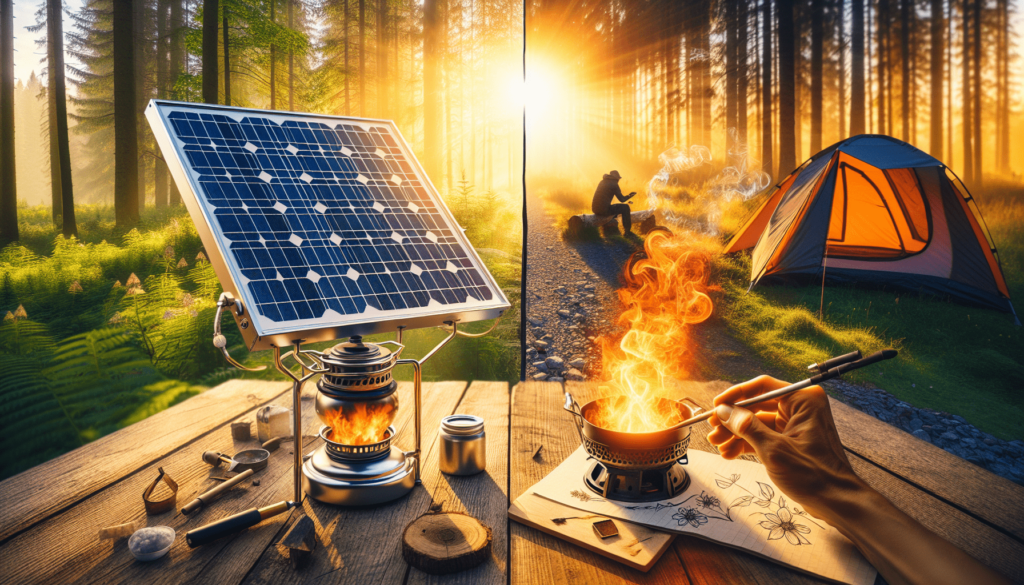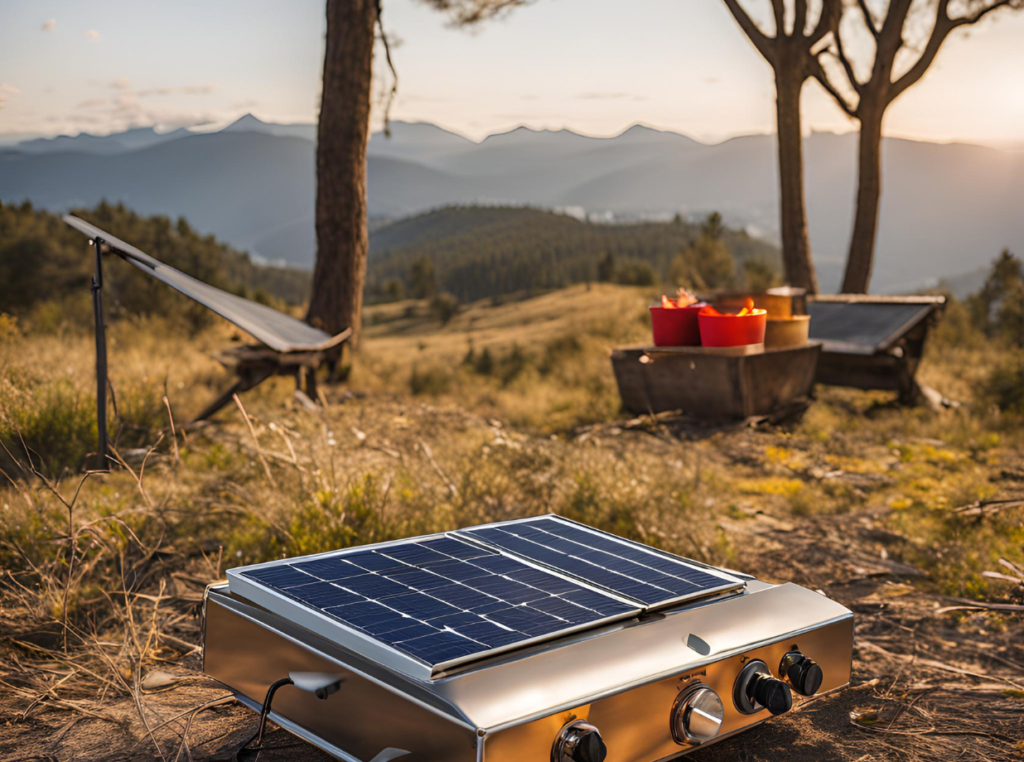Have you ever imagined life without a reliable cooking source? In many developing countries, this is the daily reality for millions. Traditional cooking methods often involve burning wood or other biomass, leading to environmental degradation and serious health issues. Solar stoves offer a beacon of hope, presenting an alternative that harnesses the power of the sun to create a sustainable and healthier cooking solution.
The Challenge of Traditional Cooking Methods
Traditional cooking methods heavily rely on firewood, charcoal, and other biomass. These materials are not only detrimental to the environment, but they also pose severe health risks. For many families, especially in rural areas, the task of gathering firewood is both time-consuming and exhausting.
Environmental Impact
The environmental toll is staggering. Deforestation is rampant due to the continuous demand for firewood and charcoal. According to estimates, approximately 2.4 billion individuals depend on these traditional fuels for cooking, contributing significantly to deforestation. This leads to habitat loss, reduced biodiversity, and increased carbon emissions.
| Environmental Issue | Contribution by Traditional Cooking |
|---|---|
| Deforestation | High |
| Loss of Biodiversity | High |
| Carbon Emissions | High |
Health Concerns
On the health front, the World Health Organization (WHO) highlights that exposure to indoor air pollution from solid fuels is a leading cause of respiratory diseases. Women and children, who spend significant time near cooking areas, are especially vulnerable.
Some common health issues linked to traditional cooking methods include:
- Respiratory infections
- Chronic obstructive pulmonary disease (COPD)
- Lung cancer
- Cataracts
Economic Struggles
Furthermore, the economic impact cannot be ignored. Collecting biomass can eat up to 20 hours per week, time that could otherwise be used for education, work, or leisure. The financial burden is also significant, as families spending money on charcoal or firewood could instead invest in nutrition, health, or education.
Enter Solar Stoves: A Ray of Hope
Solar stoves present a revolutionary solution. These innovative devices capture and convert sunlight into heat to cook food. Offering advantages in terms of health, environmental sustainability, and economic benefits, solar stoves are a promising technology for developing countries.
How Solar Stoves Work
Solar stoves utilize reflective materials to concentrate sunlight onto a cooking area, effectively generating enough heat to prepare meals. Here’s a simple breakdown of the main types of solar stoves:
| Type | Description |
|---|---|
| Solar Box Cookers | Simple boxes with reflective flaps that trap and reflect sunlight to cook food. |
| Parabolic Solar Cookers | Shaped like satellite dishes, these cookers focus sunlight onto a central point for cooking. |
| Panel Solar Cookers | Combine elements of both box and parabolic cookers, typically cheaper and easier to make. |
Benefits for Health
By reducing the need for biomass fuel, solar stoves drastically cut down on harmful emissions. This immediately translates to cleaner indoor air and a significant reduction in respiratory ailments. Women and children, who are most affected by indoor pollution, experience far fewer health-related issues.
Environmental Advantages
Solar stoves offer multiple environmental benefits:
- Reduced Deforestation: The reliance on solar energy decreases the demand for firewood, aiding in forest conservation.
- Lower Carbon Footprint: Solar cooking means fewer carbon emissions, contributing to global efforts to combat climate change.
- Sustainable Resource: Unlike firewood or charcoal, solar energy is abundant and renewable, making it a sustainable solution.
Economic Impact
Economically, solar stoves are game-changers. Initial investment might be a challenge, but many solar stoves are designed to be affordable and long-lasting. Over time, the investment pays off by eliminating the ongoing costs associated with purchasing fuel. Additionally, more time can be dedicated to economic activities, rather than collecting firewood.

Challenges in Implementing Solar Stove Technology
Despite their benefits, solar stoves are not without challenges. Understanding these barriers is crucial for effective implementation and widespread adoption.
Cultural Resistance
In many communities, cooking traditions are deeply ingrained. Transitioning to a solar stove can be met with resistance due to:
- Taste Differences: Some people believe food tastes different or better when cooked over an open flame.
- Cooking Techniques: Traditional cooking methods often become part of cultural identity, making change difficult.
Economic Barriers
While solar stoves can save money in the long run, the initial cost can be prohibitive for low-income families. Funding and subsidies are often necessary to make these technologies accessible.
Technical and Climatic Issues
Solar stoves depend on sunlight, which makes them less effective during cloudy or rainy days. Technological advancements are helping to address these limitations, but reliability remains a concern.
Success Stories and Ongoing Efforts
Numerous initiatives and organizations are working to promote the use of solar stoves in developing countries. These efforts illustrate both the potential benefits and the challenges that need addressing.
The Case of Solar Cookers International
Solar Cookers International (SCI) has been at the forefront of promoting solar cooking around the world. Through advocacy, education, and direct assistance, SCI has successfully introduced solar stoves in many underprivileged communities.
Local Initiatives
Local organizations often play a crucial role in the successful implementation of solar stoves. They understand the community’s unique challenges, cultural nuances, and specific needs better than international organizations might. Examples include:
- India: Organizations like Solar Hope project are working to distribute affordable solar cookers in rural areas.
- Africa: In countries like Kenya and Uganda, local NGOs have introduced solar stoves with considerable success.

The Path Forward: Scaling and Sustainability
For solar stoves to reach their full potential, a comprehensive approach is needed. This involves raising awareness, offering financial support, and continuing technological innovation.
Policy and Financial Support
Governments and international bodies can play a significant role by:
- Providing Subsidies: Financial assistance can help low-income families afford solar stoves.
- Incentivizing Usage: Policies that reward the use of sustainable technologies can encourage broader adoption.
Community Engagement and Education
Local leaders and community groups should be involved in educational campaigns. These efforts can help break down cultural barriers, provide training, and showcase the benefits of solar cooking.
Ongoing Innovation
Continuous improvement in technology can address some of the existing limitations of solar stoves. This might involve:
- Enhancing Efficiency: Making solar stoves that can store energy for periods of low sunlight.
- Affordability: Reducing costs through research and development.
Conclusion
Solar stoves bring a beacon of hope to millions facing environmental and health challenges due to traditional cooking methods. While hurdles still exist, the potential for positive change is immense. With collective efforts from governments, organizations, and communities, solar stoves can transform lives, fostering a healthier, more sustainable, and economically viable future.
Harnessing the sun’s power is not just about cooking food—it’s about creating opportunities, protecting health, and preserving natural resources. All these can be achieved, one solar stove at a time.



